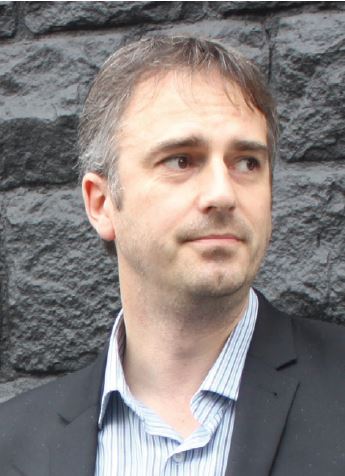Our materials science titles reflect the interdisciplinary nature of the field. You will find in-depth analysis across a broad range of materials topics, from energy storage to bionanodesign, and antimicrobial materials for biomedical applications to smart membranes.
But have you ever wanted to know a bit more about who writes them?
Introducing Simon Hall

Editor of Bioinspired Inorganic Materials
Tell us about your book
Bioinspired Inorganic Materials will provide up-to-date reviews of research in the area of bioinspired inorganic materials, with some historical context. The emphasis is on how bioinspiration is being used for cutting-edge applications. This book will provide undergraduates, postgraduates and other researchers convenient and accessible introductions to these topics.
What do you think will be the next big breakthrough in your subject area?
There is virtually no field of scientific endeavour that has not felt the touch of the ‘bioinspired’ ethos and that is reflected in this book. In particular, big breakthroughs are coming for energy applications such as in batteries and artificial photosynthesis and also in bioinspired materials for regenerative medicine such as hydrophobic glues and self-healing structures.
Looking back what is the biggest development in your area of research?
In my opinion, it was the publication of the book On Growth and Form by D’Arcy Wentworth Thompson in 1917 that irrevocably changed the way biological structures were considered. Up to that point, there was a view that natural structures formed because of some ‘vital’ force. On Growth and Form however considered biological structures to be a consequence of the physical behaviour of matter, such as surface tension and compartmentalisation. Once this was realised, it was a logical step to use knowledge of the physics and chemistry of materials to replicate natural structures in the laboratory in a biomimetic way.
What was the biggest challenge you faced when editing the book?
The biggest challenge was deciding which of the multitude of fields using bioinspiration should be included in the book. I feel that by focussing the book on the use of bioinspiration in the creation of materials for technologies with the largest societal impact, this challenge was met and met well.
Introducing Richard I Walton

Editor of Inorganic Materials series
Tell us about the series
The Inorganic Materials series provides up-to-date reviews of topical and emerging areas of research in the broad field of functional materials. This is a fast-moving field that is driven by applications in many important and diverse technologies, such as electronic devices, energy storage, environmental clean-up and biomedicine. Our aim is to provide accessible introductions to contemporary topics for all researchers, from final-year undergraduate students upwards. We purposely chose the series title Inorganic Materials to emphasise that the subject covers chemical elements from all parts of the Periodic Table and is by no means limited to one subset of materials. In fact, the volumes highlight the interfaces of chemistry with other disciplines, ranging from physics and biosciences to medicine and electronics. We not only cover properties of materials but highlight their structures, their synthesis and methods for their study.
What do you think will be the next big breakthrough in your subject area?
This is difficult to predict, given the huge scope of the subject, but what is particularly exciting is the rapid development of experimental methods for studying the structures of materials – not only under static conditions, but also reactive conditions and during their synthesis. Coupled with advances in computational methods for predicting new structures, the pace of discovery of new functional materials is rapidly increasing so the possibility of new substances with targeted properties suited for application could well become a reality.
What is the future looking like for Inorganic materials?
The potential of the subject is tremendous, especially given the current demands for high-performance materials for applications in energy and the environment. This includes batteries, fuel cells and solar devices for the capture and degradation of pollutants. These are well-publicised topics whose importance is globally recognised and for which innovative chemistry is needed. These demands are not likely to go away with increasing a global population, diminishing natural resources and climate changes. Although it is impossible to predict exactly which materials and properties will be required, there is no doubt the topic will continue to grow over the coming years.
How did you get into your field?
My first research project as a final year undergraduate at Oxford was in solid-state chemistry, studying the synthesis and structures of zeolite-type phosphates using organic templates. This not only led to the discovery of new structures but provided excellent training in the combination of materials synthesis and structural characterisation. That training was further developed in subsequent projects on amorphous chalcogenides during my PhD and then in using in situ methods for following crystallisation in solvothermal reactors back in Oxford. It was the mixture of synthesis, structural characterisation and property measurement that is involved in solid-state chemistry that appealed to me, and it led me to my current work in synthesis of materials with properties and applications guided via industrial collaboration.
Core disciplines, related fields, emerging topics
Find the books you need for 2019: download the catalogue
